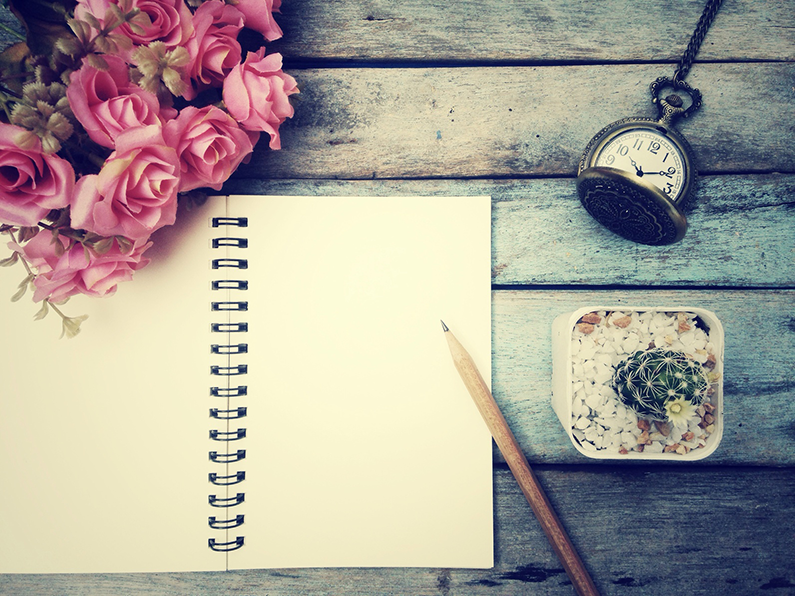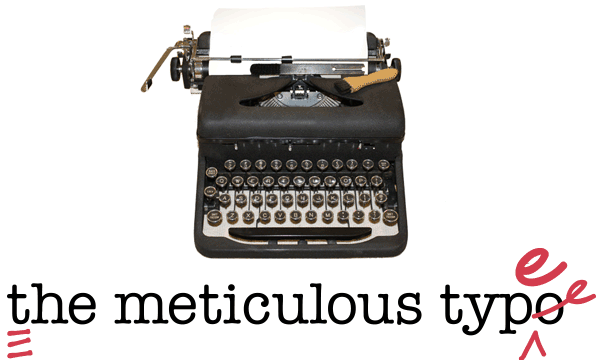
I suspect that when most people think about editors, they envision someone brandishing a red pen, ruthlessly slashing the author’s carefully and lovingly crafted prose. I confess that I too have utilized the red pen imagery in my logo for The Meticulous Type, which displays editing marks in red ink.
But the truth is: I always edit in pencil.
I realize that this practice defies the very notion of an editor plying her trade, but there you have it. I’m a bit of a rebel that way. Oh, I’m not completely old-fashioned—I happily use Word’s track changes feature on my second round of edits. But for the first round, I prefer the gentler art of editing in pencil.
This editing preference also allows me to indulge in my love of pencils. I confess, I’m a pencil aficionada. Truly, the pencil is the perfect blend of functionality and aesthetics. For me, there is nothing quite as satisfying as searching for the quintessential writing instrument and finding that perfect pencil with the right type of wood, graphite hardness, shape, lacquer, and aesthetically pleasing exterior. And the smell of a freshly sharpened pencil—divine. I have been advised by an ergonomics expert to swap out my mother’s 1950s walnut writing desk for a proper computer desk. But the smell of pencil still lingers in that desk, evoking childhood memories of Dixon Ticonderoga #2 pencils, so I resist all efforts at modernity and make do.
Apparently, I’m not alone in my obsession for the perfect pencil
C.W. Pencil Enterprise is a small boutique in the Lower East Side of Manhattan that sells wood-cased pencils, both new and vintage. Imagine, a store devoted to pencils! I could just die. In addition to over thirty-five brands of pencils—and I don’t mean those cold mechanical types—owner, Caroline Weaver, offers erasers, pencil sharpeners, pencil cases, pencil holders, pencil caps, notebooks, notepads, books on pencils, pencil posters, pins, and other related products. She even offers pencil extenders, for those who are just not ready to give up on that cherished nubbin of a pencil. Who knew there was such a wonderful device?
Ms. Weaver is so enthralled by pencils that she wrote a book about them entitled, The Pencil Perfect. Now that is one book this editor would have loved to have edited! In the midst of the computer age, a longing for the tactile sensation of writing in pencil remains, along with a yearning for our elementary school days, and Ms. Weaver and C.W. Pencil Enterprise have clearly tapped into that longing.
Now there is nothing new about this love affair with the pencil
Renowned writers have long extolled the pencil as their writing instrument of choice. Henry David Thoreau’s father owned a pencil factory, and he passed on his devotion to pencils to his son, who was never without one. John Steinbeck was a pencil devotee and is said to have used 300 pencils to write East of Eden. Ernest Hemingway used both pencil and typewriter, but the first draft was always in pencil. Contemporary writers, such as Joyce Carol Oates, Susan Sontag, and Andre Dubus III, also eschew the computer in favor of writing in longhand with a pencil. Booth Tarkington, a multiple winner of the Pulitzer Prize for Fiction, urged writers to, “Use pencils. Write on thick paper. Sharpen two or three dozen rather soft pencils before you work. Use pencils with erasers on them—and use the erasers!” Sounds like perfect advice to me.
There is a kindness in editing with a pencil
Using a pencil—and eraser—reminds me that I am not always right, and a pencil allows me to change my mind about an edit I suggest. It permits me to reconsider whether the writer did have it right and that I’m just changing something that is perfectly fine and in keeping with the writer’s tone and voice. Using the humble but noble pencil is my daily reminder that my role as an editor is to respect the writer’s voice.
And I do so using my favorite pencil.

Now I want to go buy a pencil!
So many to choose from, and it’s a relatively cheap investment!
Well said (written) and so true.
Ask me about Crayola crayons sometime. ?
Thanks, Carol Anne! I’m big on crayons as well. Do share!
Mmmm. The smell of Crayola crayons is such a “back to school” and new beginnings scent that I often succumb to buying a box.
One of my favorite things about starting a new school year!
Loved your blog! Nice story!
I appreciate your feedback, Renee!